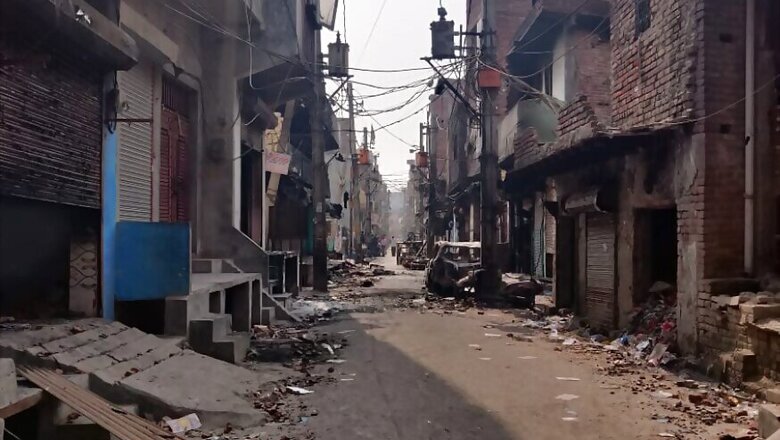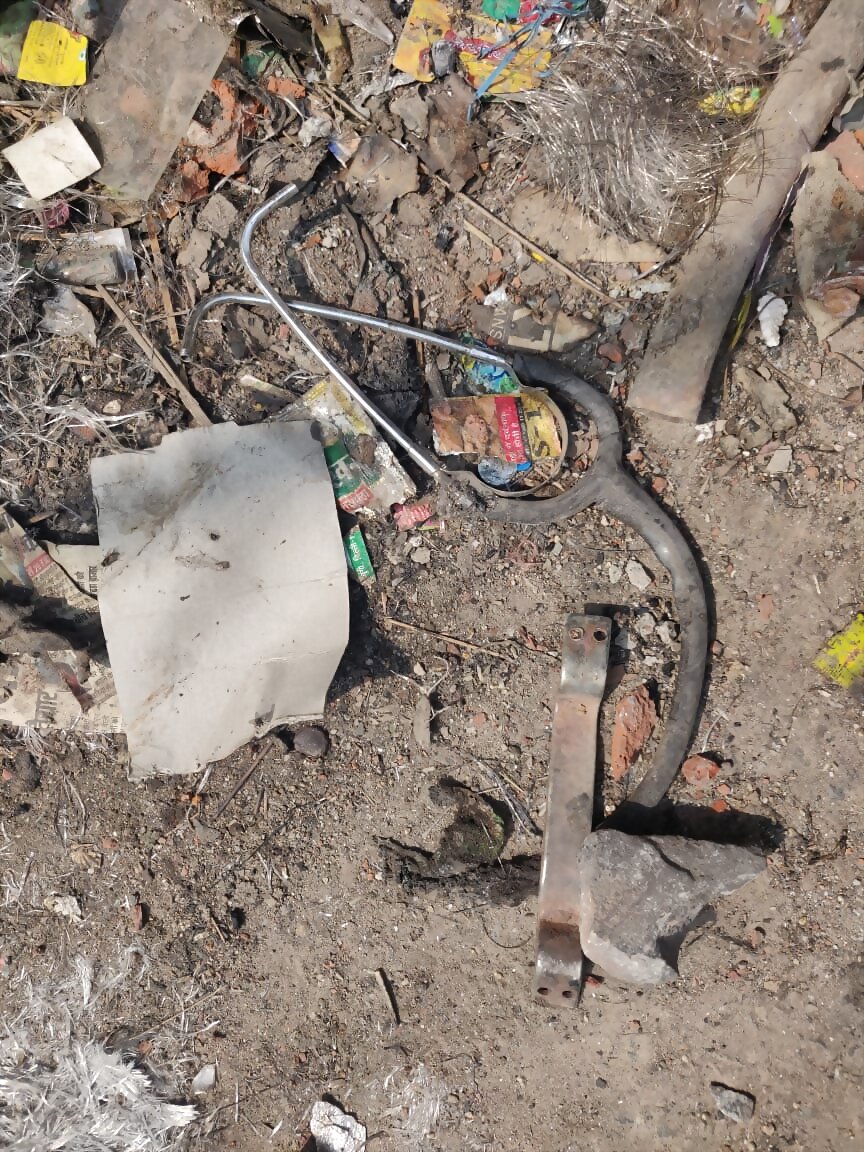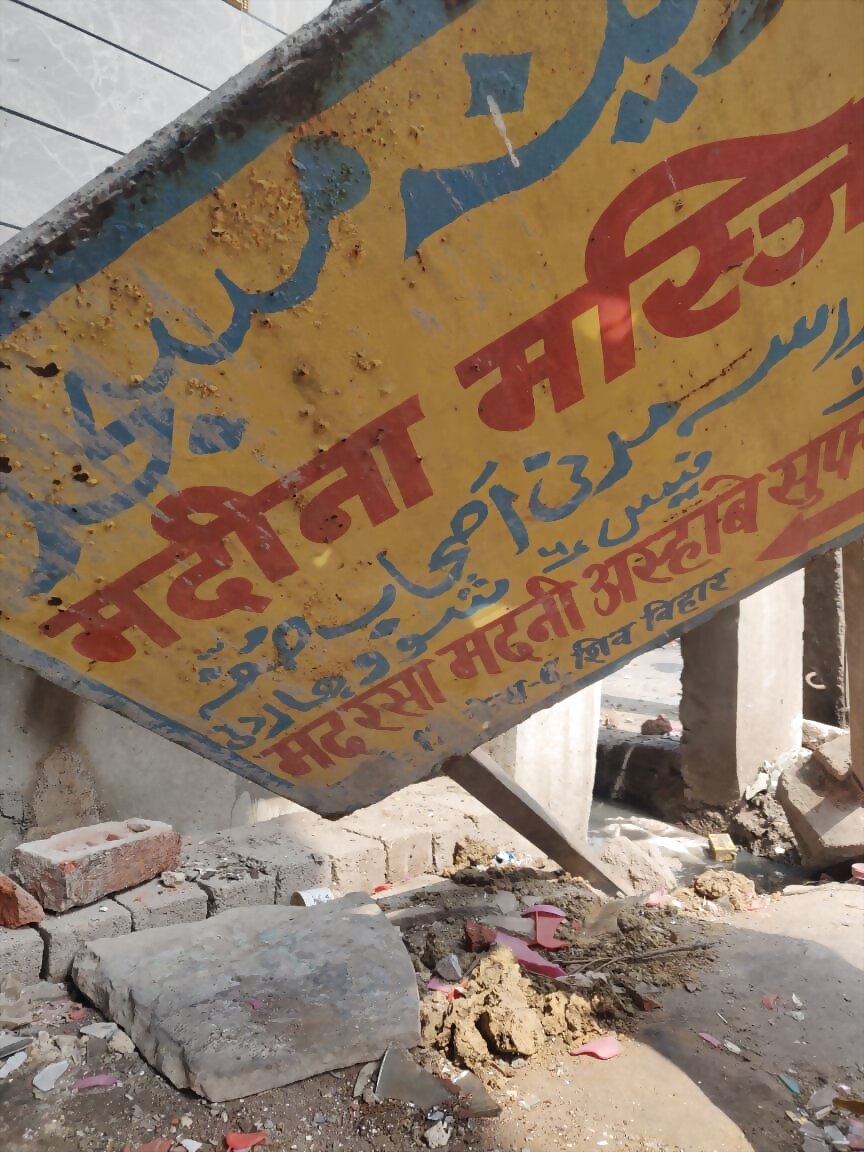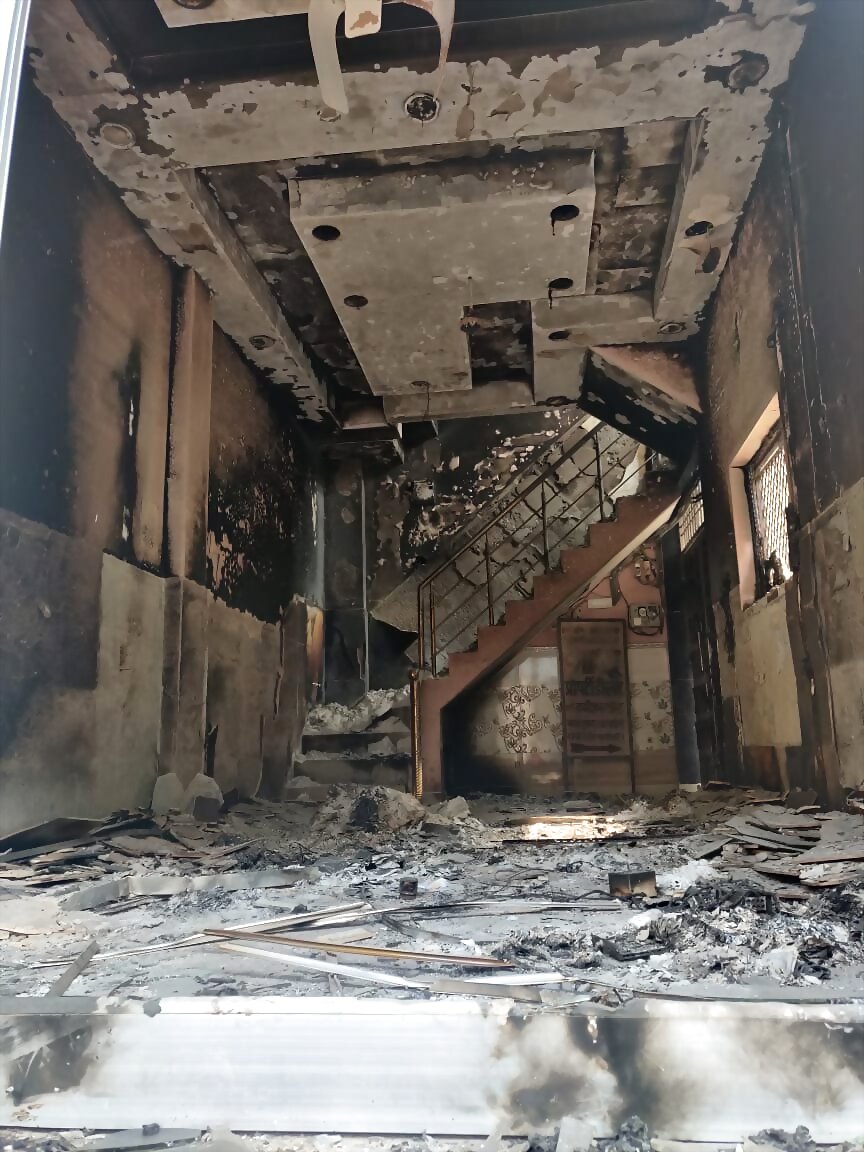
views
New Delhi: Barricades. The first things that one encounters while trying to enter the riot-stricken cobweb-lanes of north-east Delhi’s Shiv Vihar are makeshift barricades. Made of sticks, bamboo, sundry sheets of metal and belligerent humans, these barricades are meant to prevent “outsiders” (and media personnel) from entering the inner lanes of the Hindu majority neighbourhood, which saw some of the worst of the sectarian violence that started on the night of February 23.
"Sab chaley gaye, yahan kuch nahin hai" (They all left, there’s nothing inside),” says one of the teenage boys standing sentry, with stern eyes and a saffron mark on his forehead. Finding a way around the angry gatekeepers and approaching what was once called the “Madina Masjid Gali”, one is greeted by the stench of burnt rubber and ash. Madina Gali and 25 Foot Road has turned into a ghost town as all Muslim families on the streets have already fled.

(A torn stethoscope found lying in a ravaged road. News18)
'They all left'
Four days after violence first broke out in nearby Shiv Vihar, the Muslim-dominated parts of the locality sit charred in a pile of debris. Broken doors and windows hang from blackened hinges, skeletons of vehicles toasted to crisp lie askew, looted goods from bakeries and medical stores and broken glass dot the street among an assortment of everyday objects that are no longer good for use: a broken stethoscope, a blackened tea-strainer.
The chaotic remnants reveal the violence that unfolded in the once harmonious neighbourhood following clashes in nearby Maujpur that ensued hours after Bharatiya Janata Party (BJP) leader Kapil Mishra said those protesting against the (Citizenship) Amendment Act, 2019 (CAA) would be forcibly removed from Delhi streets. The clashes soon sparked communal rioting that killed over 45 people in nearby areas, both Muslim and Hindu.
After four days of violence, only Hindus remain in the neighbourhood.

(A broken signboard at Madina Masjid Gali. (Image credit: Rakhi Bose, News18)
'Not my Ram'
Muslim families in Shiv Vihar started to flee the street on Sunday itself. A witness recalls masked mobs chanting “Jai Shri Ram” marching in the streets with rods, sticks, farm tools, petrol bombs and country-made pistols, attacking Muslim as well as Hindu households.
Amid the shuttered shops and charred tenements of 25 Foot Road, a chemist has opened his store. The owner, Dushyant Kumar, sits inside with three other Hindu men. According to him, stone-pelting started on Sunday night as “outsiders from Johripur” started to lob rocks and petrol bombs onto the street. “The mob started to torch homes and beat people on streets. There was total chaos,” Dushyant tells News18. “It was these men who set fire to and desecrated the mosque as well.”
Just a few feet from the pharmacy, which remains unscathed, Gulsher Bakery, one of the many confectioneries owned by Muslims on the street, was charred beyond recognition. Bags of baked sweetmeats lie strewn on the road outside, mixed with shards of glass. Dushyant, who has been living nearby and running his shop on this very street for seven years, wonders how it came to this. “It was outsiders who chanted Jai Shri Ram. But this is not my Ram. We don't know who those men were,” he adds.
On Thursday, when the street had already been deserted, says Dushyant, some Muslim residents had attempted to come back to their homes and shops to retrieve documents and other important items. Aslam, who works at what used to be one of the several bakeries on the street, had come back to check if the cash box was still intact. He was accompanied by his 10-year-old son. “Mobs instantly started to converge. I have known Aslam from before. He came to me for help, asked me to let him hide at my place,” Dushyant recalls.
He, however, admits that he was unable to provide refuge. “If the mobs found out I was sheltering a Muslim, they could kill me and my family too.” Aslam wasn’t the only one, he informs. Others who had come back to the street without police protection were also heckled and beaten by “outsiders”.
“We are all scared here, especially at night. I have sent my family away. At night, I patrol the streets along with other men to ensure no mobs enter our house,” Dushyant tells News18.
The 39-year-old adds that he did manage to save Aslam’s life. Pointing to a broken food cart outside his shop, he says, “I hid them there for some time. Thankfully, I saw a police vehicle passing by outside and I managed to get them on that.” He has no idea what became of the two. Dushyant says he and some other locals also helped some Muslim women escape to Mustafabad.

(A burnt shop of a property dealer. (Image credit: Rakhi Bose, News18)
'Hindu house not spared'
The lone Hindu home on Madina Gali belongs to the Baghels and is located just adjacent to the seminary. Both bear scars of the violence.
According to Dushyant and other locals in Shiv Vihar, there was a dispute regarding the mosque and the Baghel house. Hindu locals claim the mosque authorities were trying to intimidate the Baghels into vacating their property. Former Muslim residents of the street that News18 spoke to in Mustafabad say that the story was just a conspiracy theory to blame the community for the riots. They claim both the mosque as well as the Baghel home was burnt by the same mob.
Shree Ram, another local resident, backs the second theory, claiming that the Baghel house was the first to be torched on Monday after which the mosque was burnt. “I don't know if they were two different crowds,” he says.
Other than the Baghel home which is in Madina Gali, not many Hindu houses bear the soot of the carnage. “My Muslim friends have all fled to Mustafabad with their families,” says Naveen Singh, a Shiv Vihar resident (and News18's guide). “I messaged and called them from Monday itself when they left. They are all safe now,” says the 16-year-old, whose class X examination was postponed due to the riots.
“I had only read about such things in books or in Bollywood movies. Never thought I would watch something like this in real life,” the teenager says.
Though no Muslims now remain in Madina Gali, Shivansh still hesitates to enter it. “Others may think I am a miscreant or Muslim, I might get attacked.”
Meanwhile, Rapid Action Force (RAF) teams patrol the lanes of Shiv Vihar in blue fatigues, riot gear and weaponry on the ready. Locals like Shree Ram and Dushyant are thankful for their presence but agree that had police and government forces arrived on time, the violence could have been contained.
One wonders who the security personnel are defending on the empty roads, now that they are deserted. Perhaps the Hindu families that remain. Or the ghost of a street that once was.


















Comments
0 comment